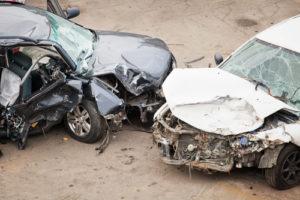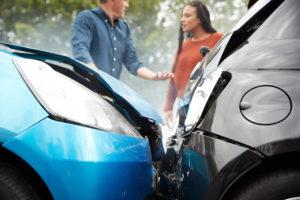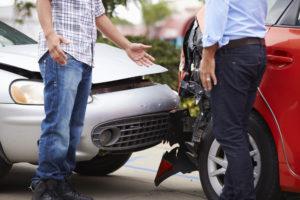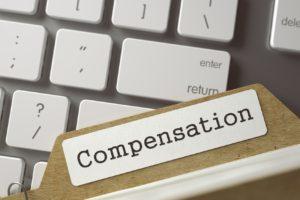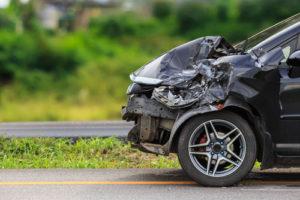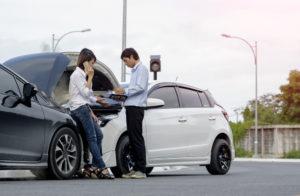
If you are involved in a vehicle accident and are partly at fault, Ohio’s contributory fault law allows you to receive partial damages if your responsibility level is less than 50 percent. In addition, Ohio is an at-fault state, meaning you can recover compensation from the other driver in many instances.
What you say after an accident can be used against you in determining fault for the accident.
Understanding Contributory Fault
The terms “contributory negligence,” “contributory fault,” “comparative fault,” and “comparative negligence” are often used interchangeably. For our state, we will use “contributory fault” as defined in Ohio Revised Code Section 2315.33. The assigned fault percentage is detailed further under Ohio Revised Code Section 2307.22 and Ohio Revised Code Section 2315.34.
When contributory fault is used as a defense, the jury will assign a percentage of fault to the plaintiff (you) and the defendant (the other driver). Even if the court determines that the plaintiff is partly at fault, you may still be able to receive partial compensation. Ohio’s modified comparative fault law draws the line at 50 percent. That means you can collect at least partial compensation if you are less than 50 percent responsible.
For a free legal consultation, call (614) 538-1116
Never Admit Fault in an Accident
In at-fault states like Ohio, the person responsible for the crash is liable for the damages. In some accidents, the on-site law enforcement officer will determine fault at the scene. When responsibility is not resolved at the scene, it can be established later using the evidence from the location, including:
- Photos of the damage to the vehicles
- Photos of the scene
- Witness statements
- Video from nearby buildings or traffic cameras
- Statements from both drivers
Suppose you admit fault at the scene or while discussing the accident later. In that case, that admission can be used against you during negotiations for a settlement and in court.
Avoiding an Admission of Fault at the Scene or to Your Insurance Company
There are several things you should not do after a car accident, including:
- Never leave the scene until you have all the information, and the police say it is okay to depart.
- Never admit that any part of the accident was your fault.
- Do not skip medical treatment—ever.
You should contact the police from the scene. On all Ohio highways, dialing #677 connects you to the local law enforcement agency or state police having jurisdiction in that area. If you cannot remember that number, dialing 911 will work. Still, you will need to be specific about your exact location, so they can transfer your call to the appropriate agency.
Contact your insurance company. This call does not need to occur at the scene. However, you should collect your thoughts and write a few notes to ensure you cover all the facts about your accident. If you are in the hospital and unable to call, a friend or relative can make the notification call for you.
Stick to short, factual answers when the insurance company questions you. If they request a recorded statement, it might benefit you to consult with a legal representative before authorizing the recording. Although we all pay for insurance, they only make money by paying out as little as possible, so they can use anything you say to decrease your compensation.
What if the Other Driver Blames Me?
In many cases, the other driver may jump out of their vehicle and immediately start accusing you of fault. They might claim the entire accident was your fault. Do not accept blame for causing the accident.
The responding law enforcement officer may cite either driver for traffic violations, which can be a basis for assigning fault. In some accidents, the police could find fault with both drivers. For example, if the other driver ran a red light and you jumped your light before it turned green, you both will be found at fault. Your early start was a violation of the law that placed you in the intersection as the other driver ran the red light. As a result, you would receive a traffic citation, and the liability for the accident would be split between you.
Regardless of who receives a ticket, that alone is not a determination of fault. Do not accept the blame even if the police report clearly states the accident was your fault.
What if the Other Driver Was Uninsured?
According to the Ohio Department of Insurance, 15 percent of Ohio drivers operate vehicles with no insurance coverage or less than the minimum requirements.
To protect yourself, you can add underinsured motorist coverage (UIM), uninsured motorist coverage (UM), or uninsured motorist property damage coverage (UMPD) to your policy. These supplemental policies are not a part of the minimum requirements for Ohio vehicle coverage.
If the other driver is uninsured, it might be easier to navigate the process with a car accident attorney.
Learn More During a Free Consultation with a Car Accident Lawyer Today
Whether you are at fault, partly at fault, or not at fault, a car accident lawyer at Bressman Law can guide you through the process of receiving compensation. Our attorneys know Ohio laws, court system, and insurance policies. We will fight for your compensation. Our offer of a free case evaluation means there is no risk for you.
Call or text (614) 538-1116 or complete a Free Case Evaluation form

